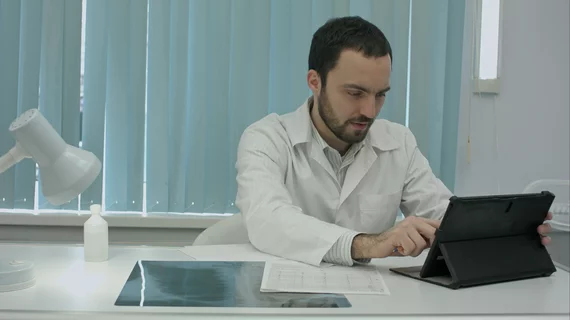Across the globe, radiologists are grappling with conflicting and constantly evolving information as they attempt to assess and diagnose cases of COVID-19. A brand-new reporting system, however, may provide clarity in this confusion.
Imaging experts from the Netherlands recently unveiled their COVID-19 Reporting and Data System, or CO-RADS for short. The tool is based on previous efforts at standardization—such as BI-RADS in breast imaging—offering physicians an established process of assessing pulmonary involvement in CT scans.
CO-RADS ranks such findings on a scale of 1 (very low) to 5 (very high) and has logged solid results thus far, experts from the Dutch Radiological Society reported Monday, April 27.
“It provides very good performance for predicting COVID-19 in patients with moderate to severe symptoms and has substantial interobserver agreement, especially for categories 1 and 5,” lead author Mathias Prokop, from the Department of Radiology at Radboud University Medical Center, and colleagues wrote in Radiology. “The system fulfills the need for a structured and fast reporting system that decreases ambiguity in the communication with referring physicians and facilitates collection of CT performance data for further research of this worldwide healthcare problem.”
Dutch researchers originally came together in early March to begin studying and disseminating COVID information and tools. From that, they formed a “standardized reporting” work group to flesh out a standardized scheme for logging lung involvement related to the virus.
They’ve subsequently tested out CO-RADS on 105 chest CTs from patients, admitted to a hospital with suspicion of COVID-19, with lab testing also conducted. Eight observers took the new system for a test spin, with Prokop and colleagues reporting “absolute agreement” among 68% of observations.
Fleiss’ kappa scores—used to assess the reliability of agreement among raters—was 0.47 overall. And it was scored highest for categories 1 (normal or non-infectious pulmonary involvement) and 5 (typical for COVID-19). Discriminatory power of CO-RADS for diagnosing the virus was “high,” they noted, with a mean area under the receiver operating curve of 0.91 for positive lab testing results.
“With soaring case numbers and increasing logistic constraints, CO-RADS was readily embraced by clinicians for ease of communication and workflow optimization,” Prokop and colleagues reported. “However, our results also indicate that the diagnosis of COVID-19 on CT remains difficult in a subset of patients, which underlines the importance of a reporting tool that includes diagnostic confidence,” the team added later.

